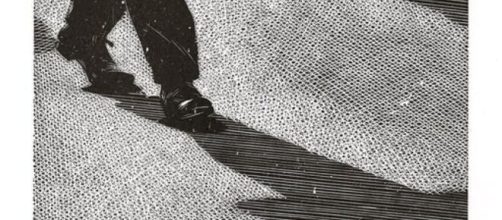You don’t expect the world of science to pay attention to matters of the heart like poetry and painting. Fasten your seat belts. The National Aeronautics and Space Administration (NASA) is readying a collection of contemporary arts for a moon landing.
The work of 30,000 artists, writers, musicians and filmmakers from 157 countries will be digitized and rocketed to the lunar body in an unmanned spacecraft. This chrono box of artistic imagination, labeled Lunar Codex, will be a permanent installation.
Over the moon
Imagine that, the art world shooting for the moon and actually getting there.
Yay. Of course, you have to wonder what moved the needle. Why is science making room for the arts in outer space?
As it turns out, the scientist responsible for founding Lunar Codex, Samuel Peralta, a Canadian physicist who not only holds a PhD in physics, but he’s also a prizewinner in a UK Poetry Society competition.
Besides books of poetry, like his 2013 “The Semaphore Collection,” Peralta runs a high-technology company that gave NASA Lunar Codex. And he makes plain in his many books about science and art that practitioners of both are searchers and discoverers with fertile imaginations.
Samuel Morse comes to mind. As an expert in electromagnetism, he gave the world the Morse Code and telegraph.
Yet, at the same time, he was a serious painter, having studied at London’s Royal Academy. He’s also credited with co-founding New York’s National Academy of Design.
Back in the future
You can see Peralta’s imagination at work in his 2015 book “Future Chronicles” – tales of artificial intelligence, time travel, and telepathy with a cast of dragons, zombies, and cyborgs.
The artists in Lunar Codex are time travelers of a kind. Last year when NASA’s spacecraft Orion went into orbit with artworks, female artists were not represented. Under Peralta’s leadership, art by women is included in Lunar Codex.
Consider the Ukrainian printmaker Olesya Dzhurayeva, who evacuated Kyiv last year. Her linocut that she named “The Ordinary Day” looks to be a reflection of Russia’s repeated cyberattacks on her country’s power grid in the year she created the work – in 2018.
What you see are headless men on foot, their loud marching steps signaled by long dark shadows. I singled this work out because shadows also play in a poem by Peralta, titled “The Night Heron” but in an altogether different way.
Night herons are known to nest in reeded protected areas, hidden from view. Peralta’s poem suggests this in his opwning ines: “Tonight I will draw over the penciled lines of the wings again, not being able to hide them the way the legs were hidden, shadowed in flight behind the reeds.”
With shadows, Peralta captures the mystery of the heron and the night while Olesya captures the manifest tension in broad daylight a life under siege.
Shadows tell stories, depending on who is telling them. Science without art is only half the story. Kudos to Lunar Codex.


